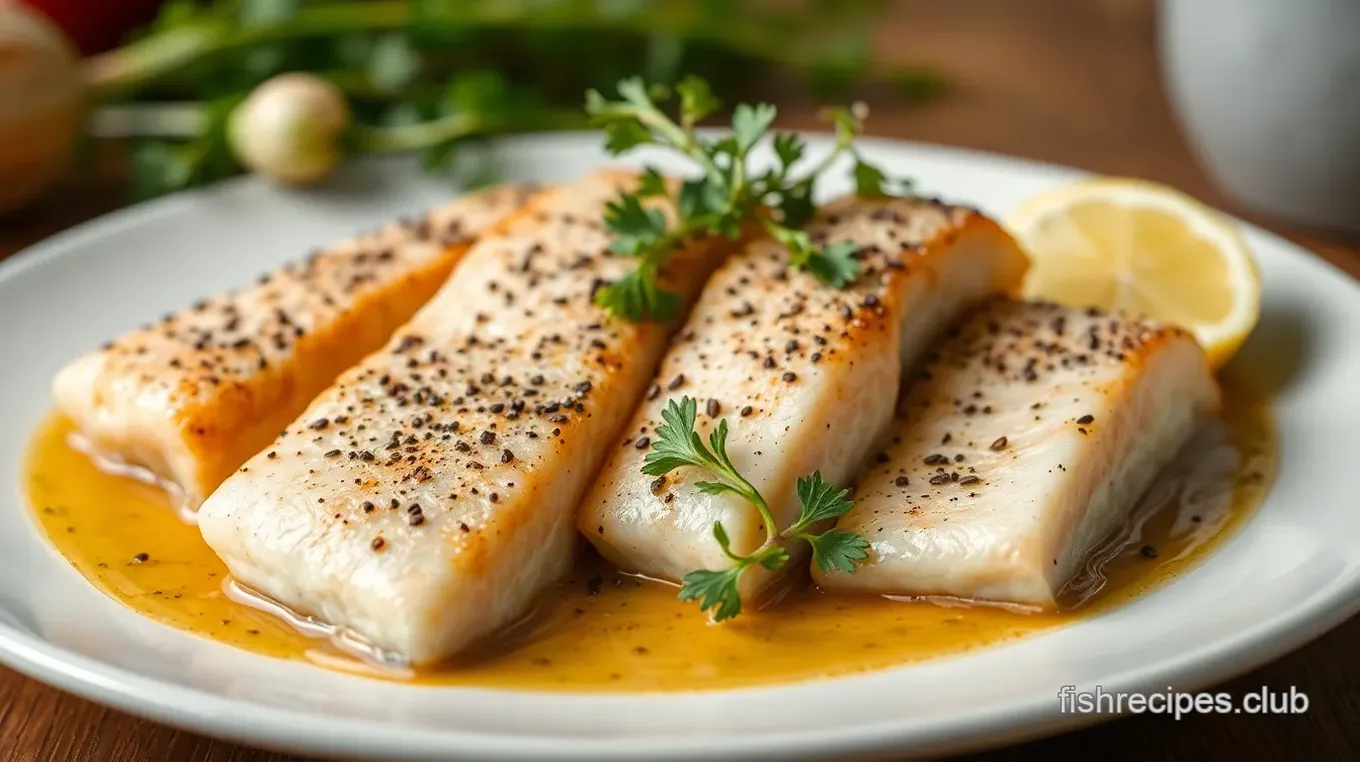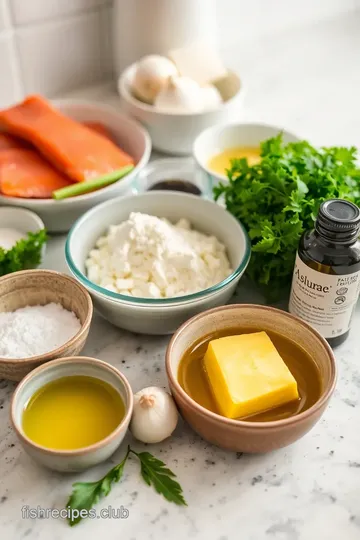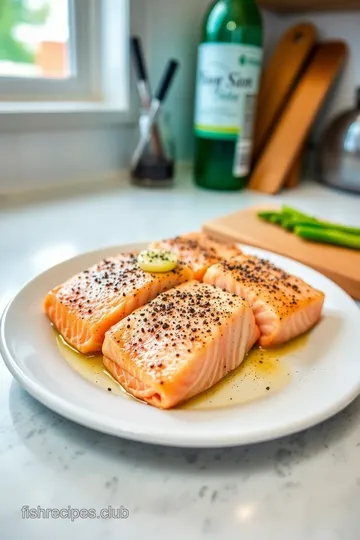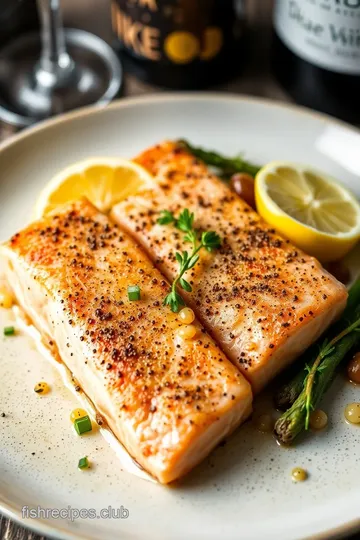Pan-Seared Fat Fish in White Wine Sauce
Looking for the best ways to cook fish? Discover 7 delightful recipes featuring fat fish wine that will elevate your seafood dining experience! Learn and try today.

- Is it possible that the secret to a perfect meal lies in a single fish fillet?
- Unraveling the History of Fat Fish
- Master the Art of Pan-Seared Fat Fish
- Your New Favorite Pan-Seared Fat Fish in White Wine Sauce
- Health and Nutrition Highlights
- Recipe at a Glance
- Master Ingredient List
- Pan-Seared Fat Fish in White Wine Sauce: Master Chef's Method
- Master Chef's Advice
- Perfect Presentation
- Storage and Make-Ahead
- Creative Variations
- Complete Nutrition Guide
- Expert FAQ Solutions
- Recipe Card
Is it possible that the secret to a perfect meal lies in a single fish fillet?
When it comes to cooking, it seems that everyone has a fish tale to tell. maybe it’s the one that got away or the grand feast of the friday fish fry .
But what if i told you that the dish we're about to explore—pan-seared fat fish in white wine sauce—could transform your weeknight dinners and impress your guests all at once? with a preparation time of just 15 minutes and a cooking time of 20 minutes , this recipe is approachable yet incredibly rewarding, making it a great fit for novice cooks and seasoned pros alike.
You might be surprised to find how simple it is to create a dish that feels like a real restaurant experience right at home.
Unraveling the History of Fat Fish
Fatty fish like salmon and mackerel have long been celebrated not just for their delicious taste but also for their rich nutritional profile .
Historically, fish has played a central role in many cultures around the globe. in britain, we have our own love affair with fish and chips, a dish that reflects our maritime heritage.
But diving deeper, the techniques of cooking fat fish date back centuries. the classic pairing of white wine with fish is one of those timeless culinary matches that has stood the test of time, enhancing flavors and creating culinary harmony.
Master the Art of Pan-Seared Fat Fish
Let’s take a moment to appreciate the culinary heritage behind our dish. pan-searing fish is an age-old technique that puts emphasis on the texture and flavor .
The origin of using wine-infused recipes with fish likely traces back to the mediterranean region, where fresh ingredients and simple techniques rule the kitchen.
Here in the modern-day, this method hasn't lost its popularity—it has only transformed. you can find it gracing plates in fancy restaurants or glowing as a hero of a home-cooked meal.
Your New Favorite Pan-Seared Fat Fish in White Wine Sauce
Imagine sinking your teeth into a beautifully cooked fish fillet, the crispy skin giving way to succulent, tender flesh, all drenched in a bright and zippy sauce.
The flavor combinations are simple yet oh-so-elegant —think lemon and garlic exploding with freshness! i can’t tell you how many times i've made this, convinced that i’d mastered it only to realize i needed to tweak my technique a bit more.
But guess what? practice truly makes perfect, and it’s been a delicious journey of learning and flavor-testing.
Health and Nutrition Highlights
Now, let’s not overlook the health benefits here. fatty fish are packed with omega-3 fatty acids, which are fantastic for heart health.
Each serving of this dish offers nutritional benefits that might sway you to make it a regular on your menu.
Plus, whether you're on a specific diet or simply trying to eat more healthily, this recipe offers wonderful dietary flexibility.
Did you know that those omega-3 fats help reduce inflammation? and with low carbohydrates and high protein content, this meal checks all the boxes.
Recipe at a Glance
- Total preparation time: 15 minutes
- Cooking Time: 20 minutes
- Skill Level Required: Medium—Don’t worry, we’ll make it foolproof!
- Serving Size: 4 servings—Perfect for family dinner or impressing friends!
- Cost Efficiency: With just a few simple ingredients, you'll find this dish not only simple but kind to your wallet.
Ready to dive into the delicious world of pan-seared fat fish in white wine sauce? next up, we’ll go over the ingredients you’ll need to gather.
They’re straightforward, and i promise they’ll take your taste buds on a flavorful journey. let’s get started!

Master Ingredient List
Premium Core Ingredients
When it comes to whipping up a delightful pan-seared fat fish in white wine sauce , having the right ingredients really makes all the difference.
For this dish, you'll need about four fat fish fillets , such as salmon or trout, each weighing around 6 ounces.
When picking your fish, look for fillets that glisten slightly, indicating freshness. you’d want them to have that lovely, vibrant color—not dull or discolored.
If you can get your hands on just-caught fish from a local market, even better!
Now, let’s not forget about seasoning. you’ll definitely need some salt and freshly ground black pepper to taste. stock up on high-quality olive oil and unsalted butter, about two tablespoons of each.
If you want to bring some zing to your sauce, grab one shallot and three cloves of garlic . trust me, a well-rounded flavor comes from these small but mighty ingredients.
Lastly, for that zesty kick, grab one lemon for juicing and zesting, along with two tablespoons of fresh parsley .
When it comes to storage, it’s best to keep your fish in the coldest part of your fridge and cook it within 1-2 days.
Herbs like parsley can wilt quickly, so wrap them in a damp paper towel and store them in a plastic bag in the fridge.
Signature Seasoning Blend
Now, let’s chat seasonings. while salt and pepper are classics, there’s something magical about a blend of flavors. try adding a dash of smoked paprika for a hint of warmth, or toss in some dried thyme or dill , which complement fish beautifully.
Fresh herbs like tarragon or basil can also elevate your dish to a whole new level. if you want to adventure a bit, consider incorporating some cumin for earthiness.
Keep an eye on the amount, as you don’t want to overshadow the fish's delicate flavor.
Now, about that white wine—go for a dry variety like sauvignon blanc or pinot grigio . you’re not just cooking with it; you’re creating a lush sauce that can be sipped alongside your meal.
Feel free to splurge a bit on a better bottle; that extra flouri-- uh, flourish will shine through in your dish!
Smart Substitutions
We all have those moments where we realize we’ve run out of an ingredient—no worries! if you can’t find fat fish like salmon, don’t fret; sea bass or even trout works brilliantly too.
If the wine isn’t on hand or you’re looking to skip the alcohol, broth can step in nicely. maybe you’re watching your salt—opt for a low-sodium broth or a splash of citrus juice instead.
Maybe you’re out of fresh herbs—hit up your spice cabinet for some dried options or consider using whatever fresh greens you have, even if they’re not parsley.
Of course, fresh fish is always best, but frozen works when fresh isn't an option.
Kitchen Equipment Essentials
Now you’re geared up with ingredients, but let’s not forget about the tools! you’ll want a large, non-stick skillet for that beautiful, golden crust on your fish.
A good, sharp chef's knife will make chopping shallots and garlic a breeze. if you don’t have a fish spatula for flipping, don’t despair; any sturdy spatula will do!
A decent cutting board is essential, and investing in a good zester can make zesting a lemon a cinch. in a pinch? you can always use the back of a grater! if you have a digital meat thermometer , it’s a handy tool to ensure that your fish is cooked through without drying out.
Pro Ingredient Tips
So, here’s a little pro tip from my kitchen mishaps. if your fish skin sticks to the pan, it’s likely because the pan wasn't hot enough.
Preheat that skillet until it’s shimmering before adding your olive oil. quality matters! look for fish flesh that springs back when pressed, and check for a clean, ocean-like smell; if it’s muskier, it’s a no-go.
Lastly, shop smart! fish can be pricey, so consider buying in bulk and freezing what you won’t use right away.
Just make sure to use proper freezer bags for storage, so you don't end up with freezer-burned fish later on.
With our delicious ingredients in place, let’s dance our way into the next task: putting this beauty together—stay tuned for the instructions!
Pan-Seared Fat Fish in White Wine Sauce: Master Chef's Method
If there’s one dish that makes me feel like a pro in my own kitchen, it’s pan-seared fish swimming in a bright, lemony white wine sauce.
Seriously, there’s something about the sizzle of the fish hitting the hot pan that just brings this recipe to life.
Plus, it’s a beautiful way to showcase the nutritional benefits of fatty fish. let’s dive into these mouthwatering techniques together!
Essential Preparation Steps
Mise en place
First things first, gather all your ingredients! you want your four fat fish fillets—think salmon or mackerel—right next to your olive oil and butter.
Chop that shallot and mince your garlic. i remember the one time i forgot to prep the garlic until the end.
Such a mess! so, save your sanity and get everything ready.
Prep Techniques
Be sure to pat your fish fillets very dry with paper towels. this not only helps with that crispy skin you want but also prevents the dreaded fish stickiness.
I’ve had one too many fish-turning disasters, so trust me on this one!
Time Management
With a 15-minute prep and 20 minutes of cooking, this dish is surprisingly quick! so, set a timer for each step along the way.
I find that it keeps me from getting distracted by my phone or the fridge.
Organization Tips
Keep your workspace tidy. i’m guilty of ending up with a chaotic kitchen, and then it becomes a game of ‘where did i put that pan?’ having a clear space makes a world of difference, trust me.
Professional Cooking Method
Step-by-Step Process
- Prep: Season the fish simply; salt and pepper can go a long way.
- Heat: In a large non-stick skillet, heat that olive oil over medium-high heat until it’s shimmering.
- Sear: Place your fish fillets in the pan skin-side down. Give them space and a whole four to five minutes of undisturbed cooking. Flip, add butter, and let them cook for another three to four minutes until that perfect flakiness. Success Indicator: The fish will turn a lovely golden brown.
Temperature Control
Make sure your pan is hot enough before throwing the fish on. not too hot that it smokes, but definitely hot enough to create that gorgeous sear.
I learned the hard way that a cold pan equals sad, soggy fish!
Timing Precision
The trickiest part? Flipping the fish at just the right moment. Look for that gorgeous golden color on one side and remember to keep the timing tight so you don’t overcook it.
Success Indicators
Perfectly cooked fish should flake easily with a fork. Also, keep an eye on the skin—crispy is the name of the game here!
Expert Techniques
Professional Methods
Don’t rush the flavor creation in your sauce! sauté the shallots until soft, then add the garlic just until it smells divine.
If you don't do it right, it’ll be bitter instead of delicious!
Critical Steps
Be patient when it comes to reducing the wine. You want that rich, concentrated flavor, which takes time. If you skip this, you might get a watery sauce—no one wants that!
Precision Points
When making your sauce, constantly taste. It’s how I’ve learned the proper balance between acidity and richness. Add more lemon juice if it seems bland, or maybe a touch more butter for creaminess—yum!
Quality Checks
Always make sure you’re using the freshest ingredients. It makes a world of difference! I’ve had subpar experiences using older fish—never fun!
Success Strategies
Troubleshooting Tips
If your sauce separates, don’t fret! Just give it a quick whisk over low heat to bring it back together. I’ve been there too!
Quality Assurance
For the best results, use fish that’s firm and smells lovely, like the ocean (not fishy). It’s essential for that delightful fat fish wine pairing we all crave.
Perfect Results Guide
For perfect results, I keep a kitchen thermometer handy. Aim for an internal temperature of 145°F (62°C) for your fish. You can avoid any dryness and have perfectly juicy fillets.
This recipe for pan-seared fat fish in white wine sauce is just bursting with flavor and can make even a mediocre cook feel like a maestro in the kitchen.
And it pairs wonderfully with a light salad or steaming vegetables on the side.
If you’re ready to impress your friends or just treat yourself to a lovely meal, stay tuned for side dishes and wine pairings that will make your plate dance with flavor next!

Master Chef's Advice
When i first started flopping around the kitchen like a fish out of water—pun fully intended—i discovered that a touch of wisdom can really elevate your cooking game.
So, here’s a scoop of professional insights i’ve carried with me over the years.
Professional Insights
One critical lesson i’ve learned, and honestly wish i’d known earlier, is the importance of seasoning your fish well before it hits the pan.
A sprinkle of salt and a grind of fresh black pepper doesn’t just add flavor; it enhances the natural goodness of the fish .
Trust me, you don’t want to skip this step. it's like jazzing up a simple suit with a snazzy tie.
Expert Techniques
Here’s one of my favorite techniques that feels like a chef's secret sauce: always start with a hot pan. think of it like preparing for a great run—warm up before you dash! properly heated olive oil delivers that gorgeous, crispy skin for your fat fish fillets.
I once tried to be a hero and added my fish to a cold pan, and, well, we won’t revisit that flop.
Kitchen Wisdom
While cooking, don’t stress if you don’t have white wine on hand for the sauce. a splash of stock or broth adds a unique flavor too.
Believe me; it’s not the end of the world if you have to make a few adjustments.
Success Guarantees
Want to ensure your fish doesn’t turn into a muddy mess? follow the instructions, notable moments no longer matter. skip over the prep, and trust me; you'll likely end up with something that looks sadder than a soggy biscuit.
Perfect Presentation
Let’s face it, nobody enjoys a plate of food that looks like it was just slapped together. The way you present your dish can make all the difference.
Plating Techniques
When plating, take a moment to consider the shape and form of your food. a simple but effective trick? use a white plate (yes, pure and plain white).
It makes the vibrant colors of your fish and sauce pop!
Garnish Ideas
Lemon wedges and fresh parsley are not just decorative; they add a punch of flavor that really brings a dish together.
If you want to make it stand out more, a sprinkle of lemon zest adds visual appeal and a zesty kick.
Serving Suggestions
Serve the fish alongside creamy polenta or even quinoa for added texture. A crisp green salad adds that fresh element that balances nicely with the rich fish.
Visual Appeal Tips
The eye eats first! a well-garnished dish not only looks great but sets the mood for a delicious meal. a dash of bright colors—like the vibrant green of parsley and the sunny yellow of lemon—will make your dish sing.
Storage and Make-Ahead
Sometimes life gets a bit hectic, and I totally get the urge to meal prep.
Storage Guidelines
Store any leftovers in an airtight container in the fridge. Trust me, your fish won’t taste great if it’s been sitting out.
Preservation Methods
If you have tons of leftovers, consider freezing them. Just be sure to wrap the fish tightly in plastic wrap and place it in a freezer-safe container.
Reheating Instructions
When you’re ready to dig in again, reheat gently in a skillet over low heat. This way, you won’t end up with a sad, dry fish situation.
Freshness Tips
Try to consume your leftovers within two days. You'll thank yourself for not making it a week-long affair.
Creative Variations
Why settle for the same old thing? Let’s shake things up a bit.
Flavor Adaptations
Feel free to experiment with different seasonings. Adding a splash of Sriracha or dollops of homemade fish sauce can zest things up.
Dietary Modifications
If you’re vegetarian or just not into fish, you can swap it out for grilled eggplant or zucchini, which may sound odd but trust me—it brings a savory depth to the dish.
Seasonal Twists
In autumn, toss in some roasted pumpkin or butternut squash for a cozy touch.
Regional Variations
Fancy a bit of spice? Add a chorizo twist with some paprika in the sauce for a Spanish spin on your pan-seared fat fish.
Complete Nutrition Guide
Eating well can feel like a mystery at times, but don’t worry; I’ve got your back.
Detailed Breakdown
A serving of our pan-seared fat fish packs in about 420 calories. Perfect for feeling full without the guilt trip.
Health Benefits
The nutritional benefits of fatty fish are impressive—think omega-3 fatty acids and protein-rich goodness! Your heart will thank you for it!
Dietary Information
This fish dish is low in carbs, making it an excellent choice if you’re watching your intake.
Portion Guidance
Four ounces of fat fish per serving is a balanced way to keep that healthy eating in check while still treating your taste buds.
Expert FAQ Solutions
Let’s tackle some questions you might be pondering.
Common Concerns
What if my fish sticks to the pan? Don’t panic! Use enough oil and wait for that sizzle before adding the fish.
Expert Answers
Is white wine necessary? Not at all! Just a splash of broth or a squeeze of lemon can save the day.
Troubleshooting Guide
If your fish falls apart, it’s likely overcooked. Lower the temp next time.
Success Tips
Remember, cooking is a journey. Each attempt gets you closer to mastering your own fat fish wine dreams.
In conclusion, cooking fish doesn’t have to be intimidating. with a sprinkle of confidence and a dash of creativity, you’ll reel in deliciousness every time.
So, roll up your sleeves, grab that spatula, and let the culinary magic begin!

Pan-Seared Fat Fish in White Wine Sauce Card

⚖️ Ingredients:
- 4 fat fish fillets (e.g., salmon, trout, or mackerel), about 6 oz each
- Salt, to taste
- Freshly ground black pepper, to taste
- 2 tablespoons olive oil
- 2 tablespoons unsalted butter
- 1 shallot, finely chopped
- 3 cloves garlic, minced
- 1 cup dry white wine (such as Sauvignon Blanc or Pinot Grigio)
- Juice of 1 lemon (about 2 tablespoons)
- 2 tablespoons fresh parsley, chopped
- Zest of 1 lemon
- Lemon wedges for garnish
- Fresh parsley, chopped (optional)
🥄 Instructions:
- Step 1: Pat the fish fillets dry with paper towels and season both sides generously with salt and freshly ground black pepper.
- Step 2: In a large, non-stick skillet, heat the olive oil over medium-high heat. Allow the oil to become shimmering but not smoking.
- Step 3: Place the fish fillets in the pan, skin-side down (if applicable). Cook for about 4-5 minutes until the skin is crispy and the fish is cooked about two-thirds of the way through. Carefully flip the fish fillets using a spatula and add the butter to the pan. Cook for an additional 3-4 minutes until the fish is cooked through and flakes easily with a fork. Remove the fish from the pan and set aside.
- Step 4: In the same pan, lower the heat to medium and add the chopped shallot. Sauté for about 2 minutes until softened.
- Step 5: Add the minced garlic and cook for an additional 30 seconds until fragrant.
- Step 6: Pour in the dry white wine and let it simmer for about 5-6 minutes until the wine reduces by half.
- Step 7: Stir in the lemon juice, lemon zest, and chopped parsley. Let it simmer for another minute to combine flavors.
- Step 8: Return the fish fillets to the skillet, spooning some sauce over them. Heat for another minute until the fish is warmed through.
- Step 9: Plate the fish fillets and generously spoon the wine sauce over them. Garnish with lemon wedges and fresh parsley if desired.
Previous Recipe: Vietnamese Catfish: 5 Irresistible Ways to Grill for Summer
Next Recipe: What Does Baking Soda Do to Perch Fish? 7 Benefits You Need to Know!
